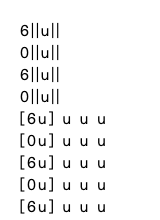Roblox Sheet

Roblox Sheet
Rush E
Sheet Music Boss
جرب Rush E بواسطة Sheet Music Boss بطريقة جديدة تمامًا! استخدم لوحة المفاتيح الخاصة بك لتشغيل Rush E نوتة روبلوكس بيانو على البيانو الافتراضي. سواء كنت لاعبًا في لعبة روبلوكس بيانو أو ترغب في ممارسة القطع الكلاسيكية، فإن Rush E نوتة روبلوكس بيانو مثالية لك، مما يجعل التقدم من المبتدئ إلى الخبير أمرًا سهلاً. Rush E مدرجة في أفضل 100 نوتة روبلوكس بيانو، إلى جانب العديد من الأغاني السهلة والكلاسيكية والبوب وأغاني الكريسماس ومجموعات ديزني لتشغيلها!
507 المشاهدات
Roblox Sheet

Roblox Sheet
Rush E
Sheet Music Boss
جرب Rush E بواسطة Sheet Music Boss بطريقة جديدة تمامًا! استخدم لوحة المفاتيح الخاصة بك لتشغيل Rush E نوتة روبلوكس بيانو على البيانو الافتراضي. سواء كنت لاعبًا في لعبة روبلوكس بيانو أو ترغب في ممارسة القطع الكلاسيكية، فإن Rush E نوتة روبلوكس بيانو مثالية لك، مما يجعل التقدم من المبتدئ إلى الخبير أمرًا سهلاً. Rush E مدرجة في أفضل 100 نوتة روبلوكس بيانو، إلى جانب العديد من الأغاني السهلة والكلاسيكية والبوب وأغاني الكريسماس ومجموعات ديزني لتشغيلها!
259 المشاهدات
Roblox Sheet

Roblox Sheet
Rush E
Sheet Music Boss
جرب Rush E بواسطة Sheet Music Boss بطريقة جديدة تمامًا! استخدم لوحة المفاتيح الخاصة بك لتشغيل Rush E نوتة روبلوكس بيانو على البيانو الافتراضي. سواء كنت لاعبًا في لعبة روبلوكس بيانو أو ترغب في ممارسة القطع الكلاسيكية، فإن Rush E نوتة روبلوكس بيانو مثالية لك، مما يجعل التقدم من المبتدئ إلى الخبير أمرًا سهلاً. Rush E مدرجة في أفضل 100 نوتة روبلوكس بيانو، إلى جانب العديد من الأغاني السهلة والكلاسيكية والبوب وأغاني الكريسماس ومجموعات ديزني لتشغيلها!
13 المشاهدات



















